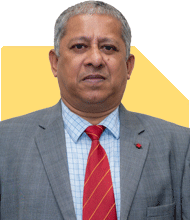Hello Sir,
Good day to you!
I am 37 year old, and earning a monthly income of 3.4 Lakhs. I have a home loan of 73 Lakhs with 9 years of tenure left, paying monthly EMI of 97K and an yearly part payment of 2 Lakhs. I have a fixed deposit of 100k and Monthly SIP of 15K. I want to increase my SIP from 15K to 100K per month to take care of Corpus fund, emergency fund and retirement fund but not sure on how to plan my portfolio. Requesting your advice in structuring the additional fund in SIP and what MF Plans to go for with a horizon of 6-8years to achieve financial freedom. Currently invested SIPs are 5k in ICICI Pru Bluechip, 5K in DSP Tax Saver and 5K in Axis Bluechip Fund.
Ans: Your income and clarity in thinking are strong assets.
Your plan to increase your SIP from Rs.15,000 to Rs.1,00,000 is truly a strong move.
You also have a good home loan plan with a consistent EMI and yearly part-payments.
This combination allows us to plan in a structured way.
Let’s now break this into a 360-degree financial structure, step by step.
Your Current Financial Snapshot
Age: 37 years
Monthly income: Rs.3.4 lakhs
Existing home loan: Rs.73 lakhs (EMI: Rs.97,000, tenure left: 9 years)
Annual home loan part-payment: Rs.2 lakhs
Current SIP: Rs.15,000/month
Fixed Deposit: Rs.1 lakh
Financial goals: Emergency fund, corpus fund, retirement fund, financial freedom
Emergency Fund Planning
Before increasing SIPs, first step is to build a full emergency fund.
This should cover 6 months of expenses, at the very least.
Assuming monthly expenses are around Rs.1.5 lakh, target Rs.9 lakh.
Current fixed deposit is Rs.1 lakh
Allocate Rs.8 lakh over 6-8 months into a liquid fund or short-term debt fund
Avoid using equity funds for emergency needs
Emergency fund should be accessible, not locked
Short-Term Safety and Debt Reduction Strategy
Continue part-payment of home loan.
You already pay Rs.2 lakh extra yearly. Keep doing it.
Reduces interest cost and tenure
Helps free up cash flow sooner for higher savings
Don't increase part-payment beyond Rs.2 lakhs now
Rest of surplus should be invested to beat inflation
Monthly Surplus Planning (Post EMI)
Your EMI is Rs.97,000.
Assuming Rs.1.5 lakh household expense, you save Rs.90,000 per month.
You want to invest Rs.1 lakh SIP – this is possible once emergency fund is ready.
Build your SIP plan in phases:
Phase 1 (Next 6-8 months): Add Rs.50,000 SIP. Keep Rs.40,000 for emergency fund.
Phase 2 (After emergency fund ready): Go full Rs.1 lakh SIP per month
This phased strategy will keep things stable, safe and practical.
Suggested SIP Allocation Structure
Your horizon is 6 to 8 years. You can take some equity risk.
But you must also build protection with hybrid exposure.
Let’s plan Rs.1 lakh SIP across various categories:
Large Cap Funds – Rs.20,000
Large cap gives stability. Invest in funds with consistent 5-year records.
Flexi Cap Funds – Rs.20,000
Fund manager can move between large, mid and small caps as per market.
Mid Cap Funds – Rs.15,000
Higher growth potential. Volatile in short term. Avoid sector-focused funds.
Small Cap Funds – Rs.10,000
Use for wealth building. Invest only with a 7+ years horizon.
Aggressive Hybrid Funds – Rs.20,000
65-80% equity and rest debt. Gives smoother returns than pure equity.
Tax Saving (ELSS) – Rs.5,000
Eligible under Section 80C. Lock-in is 3 years. Do not exceed 10% of SIP total.
Should You Continue Current SIPs?
Your current SIPs:
Rs.5,000 in ICICI Pru Bluechip
Rs.5,000 in Axis Bluechip
Rs.5,000 in DSP Tax Saver
Here’s what to do:
Continue with these three for now
Avoid adding more bluechip funds. Too much large cap exposure will dilute returns.
Tax Saver (DSP) is okay, but don’t add more than Rs.5,000/month in ELSS
New SIPs should focus more on diversification than repeating categories
Importance of Diversified Actively Managed Funds
Avoid putting large SIP in index funds.
Index funds do not adapt to market conditions. Returns will be average.
Actively managed funds can beat the index with better research and strategy.
Fund managers use sector rotation, cash allocation and stock picking.
This gives better long-term risk-adjusted returns.
Also avoid direct mutual funds. Invest through a Certified Financial Planner via regular plans.
Regular plan gives you ongoing advice, portfolio reviews and timely guidance.
That benefit is much bigger than the slightly higher cost.
Retirement and Financial Freedom Planning
At age 37, your retirement is around 20-23 years away.
But financial freedom goal may be earlier, around age 45-50.
You must calculate how much corpus you will need.
Assume 30 years post-retirement without active income.
Your SIP of Rs.1 lakh/month for 8 years will build strong base.
After home loan ends in 9 years, use that EMI as fresh SIP.
Rs.97,000 EMI can become Rs.1 lakh SIP after 9 years.
This layering strategy keeps building the snowball.
Reviewing Your Portfolio
Once in 6 months, sit and check your mutual funds.
Do not switch funds every year.
But track consistency in 3-year and 5-year performance.
Avoid overlapping schemes from same category.
One Flexi Cap and one Mid Cap is enough.
Too many funds dilute impact and add confusion.
Tax Implications on MF
Long-term capital gain in equity MF above Rs.1.25 lakh taxed at 12.5%
Short-term equity gains taxed at 20%
Debt funds are taxed at your income tax slab
Plan your redemption based on holding period to reduce tax impact.
Insurance and Risk Cover
Check if you have term insurance.
You must cover your home loan liability separately.
Use term cover of Rs.1.5 crore or more. It must be pure term insurance.
Mediclaim for family should be minimum Rs.10 lakhs.
Also take a super top-up plan of Rs.15-20 lakhs.
Don’t rely only on employer-provided health insurance.
Other Financial Hygiene Tips
Avoid real estate as investment. Focus on financial assets.
Don’t chase NFOs or fancy schemes
Don’t try to time the market. Stay invested across cycles.
Avoid regular withdrawals from SIPs unless it’s an emergency.
Create clear goal buckets: retirement, child education, corpus, emergency
Finally
Your mindset and earnings are your biggest strengths.
SIPs can be a very powerful engine for wealth creation.
Plan it step-by-step. First create safety (emergency fund). Then start big SIPs.
Stick with diversified, actively managed regular mutual funds.
Review semi-annually. Rebalance annually. Be goal focused.
You are on the right track. With this structure, financial freedom is very realistic.
Best Regards,
K. Ramalingam, MBA, CFP,
Chief Financial Planner,
www.holisticinvestment.in
https://www.youtube.com/@HolisticInvestment





















